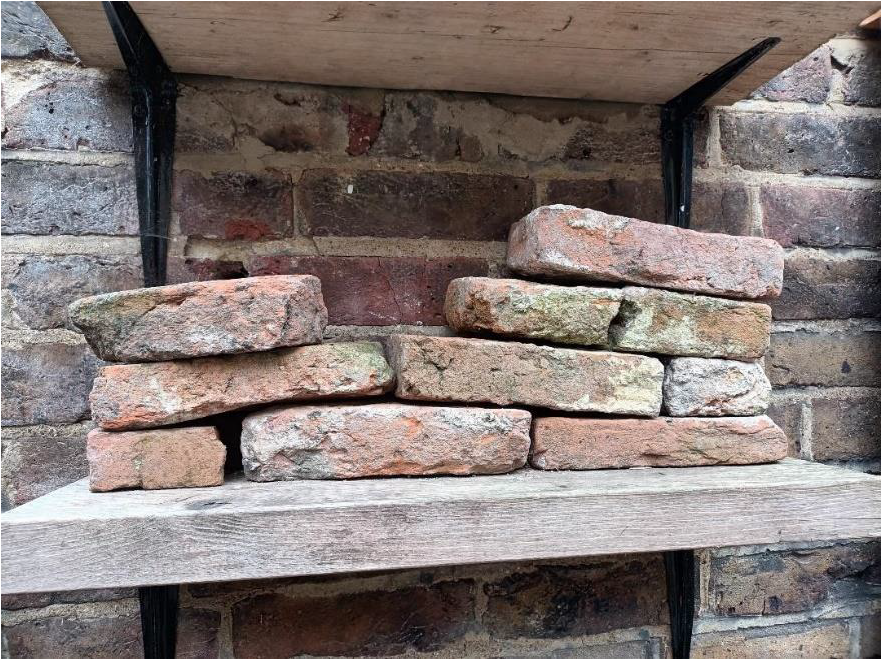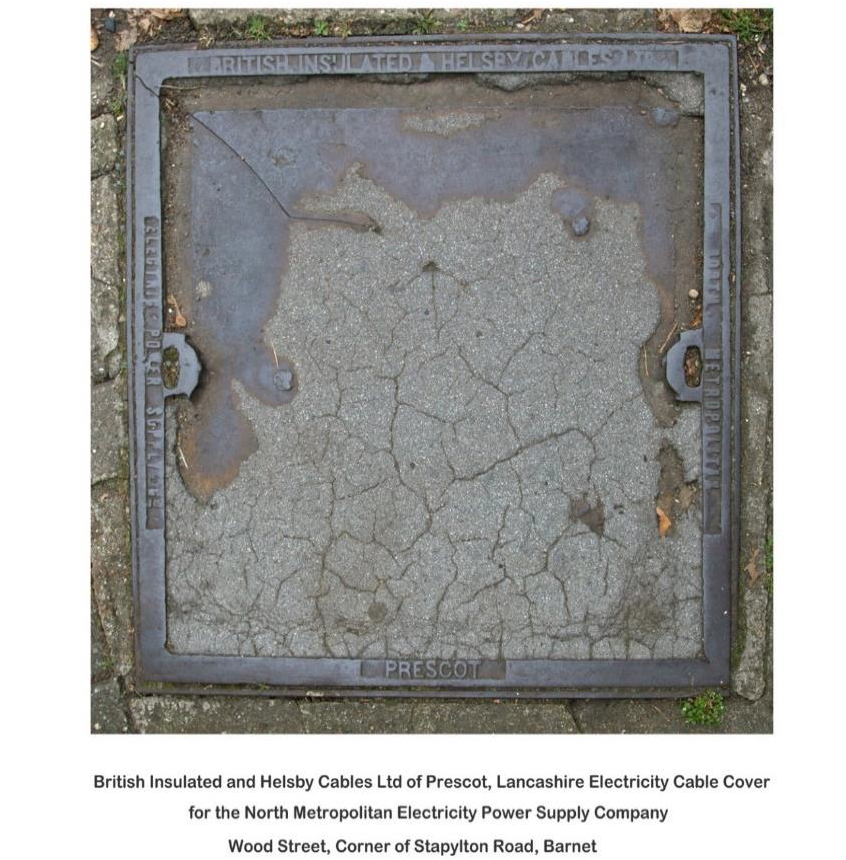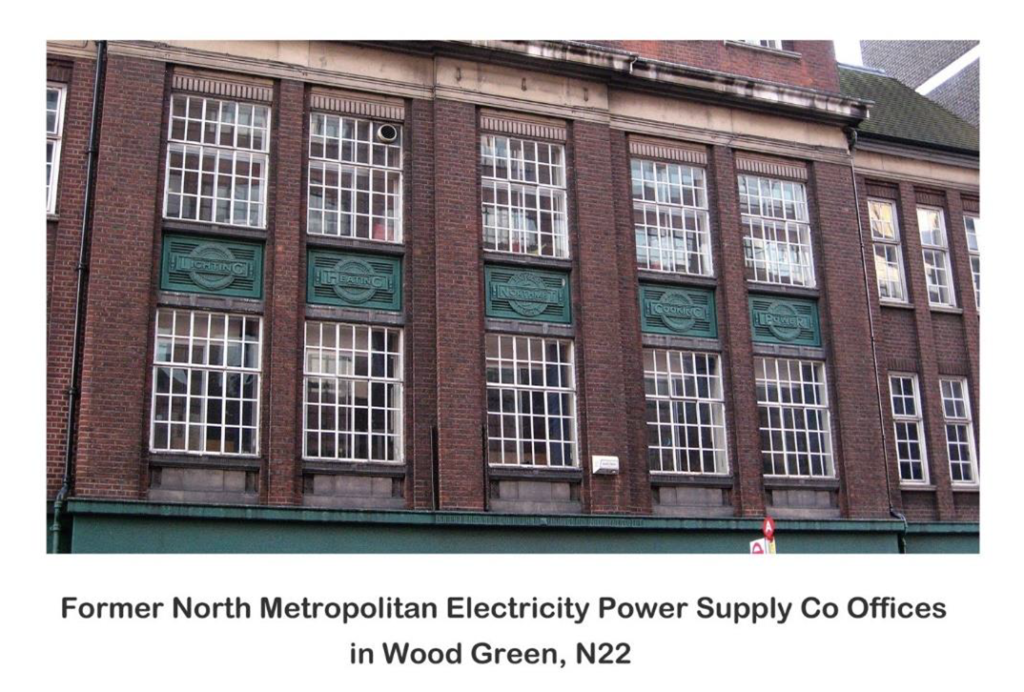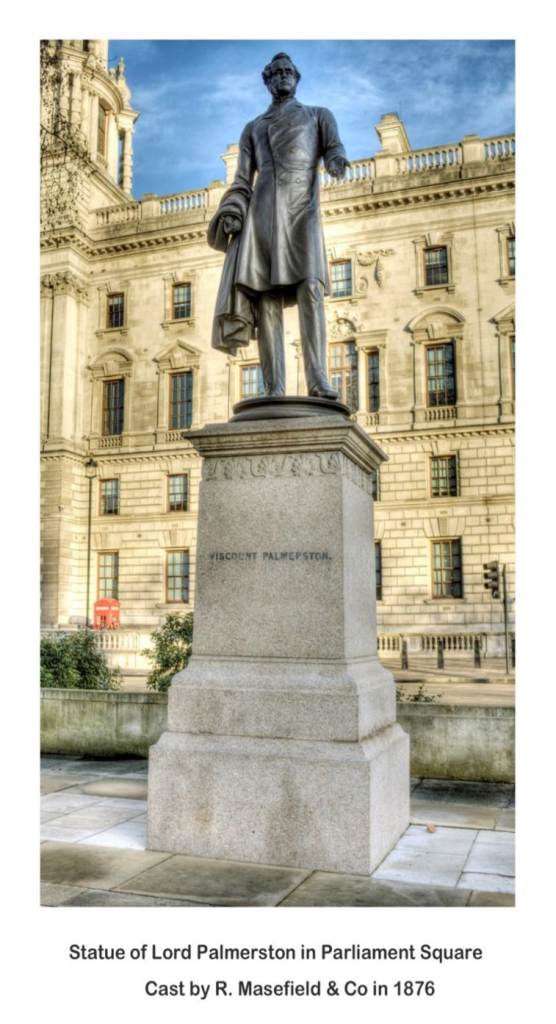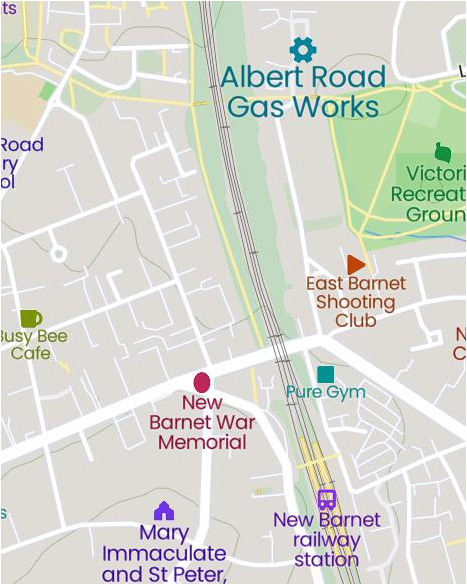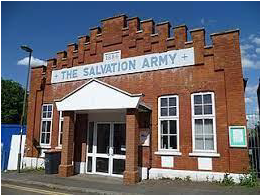
No. 620 November 2022 Edited by Sue Willetts
HADAS DIARY – Forthcoming lectures and events
Due to the COVID-19 pandemic, until further notice lectures will be held online via ZOOM, all starting at 8 pm, although we do hope to get back to face to face lectures soon. As ever, our apologies to those who are unable to see online lectures. We will be sending out an invitation email with instructions about how to join on the day of each talk, so please keep an eye on your inbox.
• Tuesday 8th November – Nick Card. Building the Ness of Brodgar.
Since 2004 Nick has directed the Ness of Brodgar excavations in the very heart of the World Heritage Site. This project has evolved from several seasons of small-scale test trenches and evaluations to large scale excavation that has become internationally recognised and reported widely in both the popular and academic press including the cover article in National Geographic August 2014. Nick has worked widely throughout Britain since graduating from Glasgow University with an MA Honours Archaeology. Over the last decade he has directed and managed a wide range of both research and commercial projects for the Orkney Archaeological Trust and latterly for the Orkney Research Centre for Archaeology of the University of Highlands and Islands (ORCA). He also contributes to various teaching modules within the Archaeology Department of the University of the Highlands and Islands and has assisted with the establishment of an Archaeology Institute within the University of the Highlands and Islands.
• December 4th 2.30 – 5.00 pm – HADAS Festive afternoon tea – see separate sheet for details
Hieroglyphs: unlocking ancient Egypt | British Museum: 13th October 2022 – 28th February 2023. In Room 30. The Sainsbury Exhibitions Gallery. £18.00 with members / under 16’s free. This new exhibition has received good reviews. It charts the race to decipherment, from initial efforts by medieval Arab travellers and Renaissance scholars to more focussed progress by French scholar Jean-François Champollion (1790–1832) and England’s Thomas Young (1773–1829). The Rosetta Stone, discovered in 1799, with its decree written in hieroglyphs, demotic and the known language of ancient Greek, provided the key to decoding the ancient signs. The results of the 1822 breakthrough proved staggering.
Alexander the Great The Making of a Myth – The British Library (bl.uk). Fri 21 Oct 2022 – Sun 19 Feb 2023. Full price £17.00. Concessions available. Astrological clay tablets, ancient papyri, and medieval manuscripts, to Hollywood and Bollywood movies and cutting-edge videogames, this major exhibition crosses continents to explore the fantastical stories that turned legacy into legend. Pharaoh, prophet, philosopher. European, Middle Eastern and Asian cultures have all moulded Alexander into the fictional hero they want him to be. And today artists and storytellers alike are still trying to reimagine the man and his myth.
1
ΗADAS Excavation at ‘Hopscotch’ 88 High St, Barnet EN5 5SN (Part 1 Introduction, Bill Bass)
As mentioned in an overview in the April 2022 Newsletter the dig took place over the weekend of the 25-27th February 2022, the site code is OPS22 with the NGR TQ 24555 19645.
Previous excavations by HADAS and other agencies in the High St, Barnet environs have shown the survival of medieval and post-medieval occupation (1). More recently (Nov 2020) has been the discovery of 54a High St, Barnet a timber-framed building (Chudy’s) 100m or so south-east of Hopscotch, which has been dated to AD1330-1362 and in Oct 2020 a series of medieval pits, possible ditches and pottery was found behind the east side of 164 High St approx. 75.00m north of Hopscotch. At 70 High St excavations found extensive post-medieval floors, walls and pits. A couple of sites on Moxon Street in 2019 excavated by AOC found in one area the remains of cellar and a large pit with pottery dating to 15th-16th centuries, whilst in an adjacent area it was mostly disturbed with a large amount of modern made ground. However, several sites in the area have returned ‘negative’ evidence through disturbance etc so it’s not guaranteed to find anything!
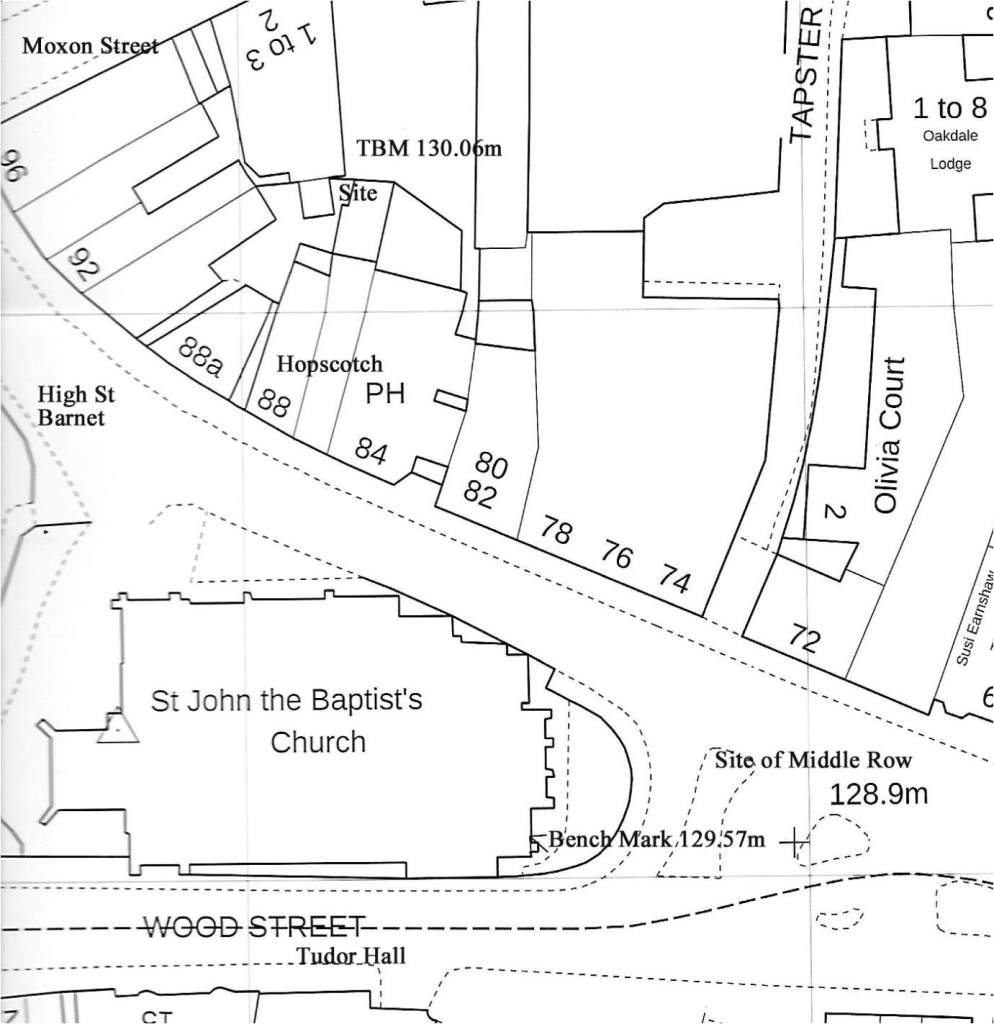
2
Michael and Alice Kentish are the proprietors of ‘Hopscotch’ they are interested in the local history, they invited HADAS to dig in the rear yard and have produced a leaflet – ’88 High Street & The Barnet Squeeze’ from which much of the info below comes from.
The site of Hopscotch lies on the bend in the High St, once known as ‘The Squeeze’, directly opposite the north side of Barnet Parish Church originally built c13th century, but a church has been on the site since the 11th century. To the east of the church in the middle of the High Street was a complex known as Middle Row, the original site of Barnet Market which received its charter from King John in 1199. Middle Row was damaged after a fire in 1889 and subsequently demolished.
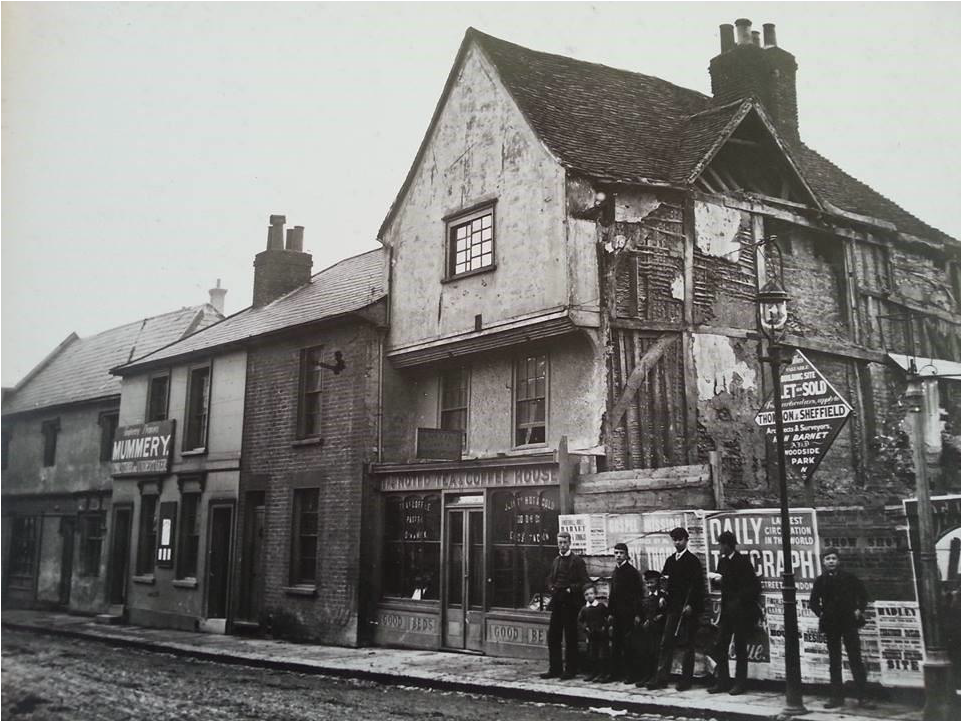
“Hopscotch is in a designated Area of Archaeological Significance on the site of an old timber building thought to be a fine example of a mid- 17th century structure which survived until 1933. Notable for its gabled facade and an oriel window which appears in many old illustrations, the site included a yard to the left and stables at the back with rear extending at least to what is now Moxon Street. This was part of a medieval burgage plot that comprised a market shop, dwelling and a tiny smallholding for vegetables and little animals such as pigs. There are no parallel lines in the layout of the property, is testament to the shop’s medieval heritage, where there has been give and take during repeated construction over the last 900 years”.
3
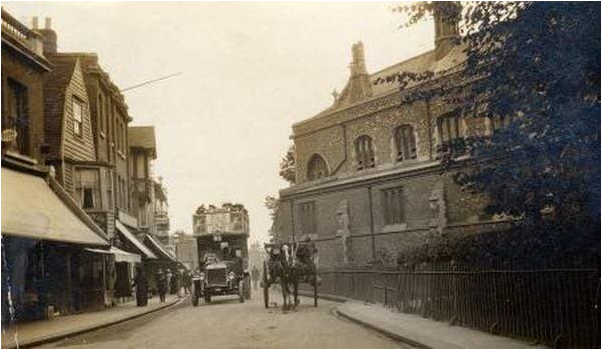
Tudor bricks: When gardening in the past, Alice has found a number of what look to be ‘Tudor’ style bricks in the topsoil of their small plot. It is not known if there was a brick building on the site (?) or nearby. However, there is the ‘Tudor Hall’ due south on the other side of the church on Wood Street, it was built c1577 (although stamped 1573) and is a Grade II listed building. Possibly the bricks may have been sourced from there.
Bibliography:
- (1) HADAS Newsletters 599, Feb 2021 and 613 April 2022.
- London Fieldwork and Publication Round-up 2019 and 2020, London Archaeologist.
- 88 High Street & The Barnet Squeeze, Michael Kentish 2019.
Part 2 will deal with the excavation.
4
Industrial Heritage in Barnet Streets David Willoughby
I share one thing (and probably one thing only) with the former leader of the Labour Party, Jeremy Corbyn and that is a fascination with the industrial history of Britain as evidenced by street furniture. I am particularly fascinated by coal plates, used to cover the openings to coal cellars through which coal was once poured from hessian sacks by coal merchants (I am currently working on a book on the subject). However, although usually less aesthetically pleasing to the eye, utility covers which allow access to utility infrastructure such as water mains, sewers, gas mains and electricity and telecommunications cables, can also tell a compelling story about our industrial heritage and there are two interesting examples to be found in and around High Barnet.
One example is the cover of British Insulated and Helsby Cables Ltd (BIHC) to be seen in outside the Black Horse public house, Wood Street at the Junction of Stapylton Road. This company was based at Prescot, near Liverpool. The cover was supplied to allow access to power cables of the former North Metropolitan Electricity Power Supply Company.
BIHC had its origins in 1890 in the British Insulated Wire Company which merged with the Telegraph Manufacturing Company in 1902 to form BIHC. BIHC changed its name to the British Insulated Cables Ltd in 1925 implying that the Barnet cover predates this. Their Prescot works produced the largest diameter cables in the world in 1900 for the Port Dundas electricity works in Glasgow.
5
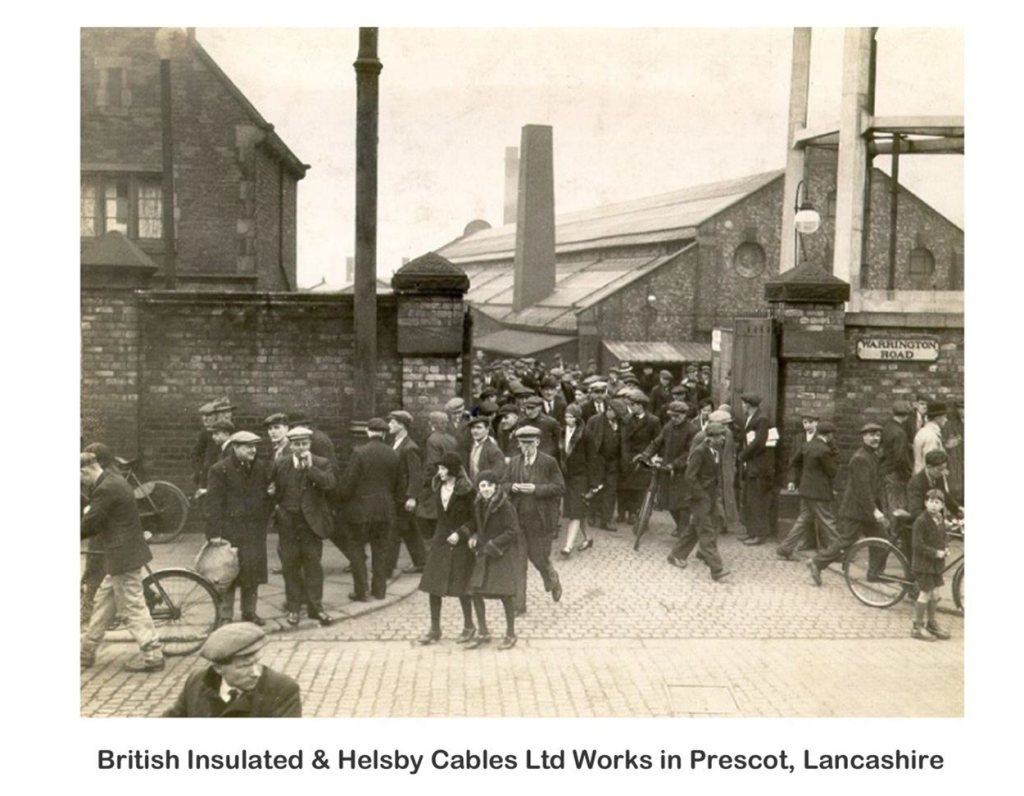
The North Metropolitan Electricity Power Supply Company (“Northmet”) brought Brimsdown Power Station (Enfield) into operation in 1904, primarily to power the local tramways. It was then extended from 1924 to 1955 to provide power more widely. Brimsdown power station had the only known British example of the Loeffler boiler system which overcame metallurgical and feedwater quality problems. Brimsdown power station was decommissioned in 1974.
Northmet had offices in Wood Green and was incorporated into the Eastern Electricity Board following nationalisation in 1947.
6
In Chipping Close, adjacent to the former Barnet Market are to be found two examples of R. Masefield & Co drain covers. The company was based at the Manor Ironworks in Manor Street, Chelsea.
Robert Masefield was born in Ledbury, Herefordshire and was baptized on 4th August 1845. His father, George was a local solicitor. After studying at a grammar school in Hereford he came to London as an apprentice of Messrs Ordish & Lefevre, civil engineers of 18 Great George Street, off Parliament Square. He was subsequently employed in their drawing office for four years before joining Holbrook and Co, iron founders, of Chelsea as a sub-manager at the Manor Iron Works. By 1870 he was in partnership with Thomas Hodson Holbrook at Holbrook and Co. The partnership was dissolved that year and Robert Masefield became managing partner and the company renamed to R. Masefield & Co from 1872, trading at the same location. The iron works itself had been in existence since about 1851 when M’Colley & Hocking traded there as iron founders. It was briefly in the ownership of John Green before Thomas Hodson Holbrook & Co took over in 1857.
Holbrook & Co were responsible for casting bronze statues such as Thomas Woolner’s Lord
Palmerston, 1869 (Old Palace Yard) and Marshall Wood’s Queen Victoria, 1869 (Montreal).
7
R. Masefield & Co described themselves as iron founders and art bronze founders. The company continued Holbrooks & Co’s tradition of casting bronze statues and cast amongst others, John Henry Foley’s General Stonewall Jackson, 1874 (Charleston, South Carolina), Thomas Woolner’s Lord Palmerston, 1876 (Parliament Square), replacing the earlier statue cast by Holbrook & Co and Amelia Hill’s David Livingstone, 1876, (Edinburgh, Princes St. Gardens).
The company was also responsible for a bridge over the Regents Canal and dolphin lamp standards in iron for the Albert Embankment and the Victoria Embankment.
R. Masefield & Co ceased trading in 1886 and the Manor Ironworks at 93-97 Manor Street in Chelsea closed. The R. Masefield & Co drain covers in Barnet must therefore date to no later than that year.
In 1871 Robert Masefield was living in Chelsea and his profession is given as iron founder. By 1881 he had moved to Manor Street, presumably to be closer to the iron works and he is then described as a civil and mechanical engineer, employing ninety-nine men. R. Masefield & Co was obviously a substantial enterprise at this time. After the dissolution of the company Robert Masefield continued to live in Chelsea. He remained unmarried and in the 1891, 1901 and 1911 censuses he is to be found lodging in Markham Square and is described as a civil engineer.
Robert Masefield died on the 1st of December 1926, aged 81, in his native Ledbury. His estate valued at £4,905 8s. 3d. (equivalent to about £333,000 today) was left to Charles Briscoe Masefield, the son of Robert’s eldest brother William. Charles, like his father and grandfather before him, was a solicitor.
New Barnet landmark disappears Jim Nelhams
To the east of the railway through New Barnet and to the north of New Barnet Station there used to be a gas works which made coal gas, with coal being delivered by train on a short branch line. Barnet District Gas & Water Company was formed by Act of Parliament in 1904 from earlier companies and supplied gas to areas including Barnet, Enfield, Finchley and Friern Barnet. The site had several gasholders the last coming into use in 1934. With the introduction of natural gas from the North Sea, most of the machinery was no longer required. The 1934 gasholder was used until 2009 to store small amounts of gas when demand was lower, to smooth supplies for peak periods. It had a maximum capacity of 2 million cubic feet.
This gasholder still exists and opinion varies whether it should be listed or demolished. After gas making onsite ceased, administrative offices were built. Later, the land was sold for housing development and the offices demolished.
The land needed decontaminating and it would seem that the developers underestimated the work required. Several planning applications have been submitted to Barnet Council, with increasing numbers of dwellings, and these have all been rejected even following appeals. Access to the site is not good and the plans included the demolition of buildings at the south end at the junctions of Albert Road, Victoria Road and East Barnet Road, This demolition has gone ahead. One prominent building in Albert Road has already suffered. This was the Salvation Army Barracks built in 1886, in an area with several public houses, the Builders Arms (directly opposite), the Railway Bell and the Railway Tavern. The Barracks were opened by the daughter of General William Booth, founder of the Salvation Army. General Booth lived for a time in Hadley Wood and there is a blue plaque marking his residence.
8
One of the last functions at the building was as the storage for the Chipping Barnet Foodbank, which has now moved to the Catholic Church of Mary Immaculate and St Peter in nearby Somerset Road.
Other Societies’ Events Eric Morgan
Please check with the Society or Organisation before setting out in case of any changes or cancellations.
Thursday 3rd November, 7p.m. Avenue House (Stephens’ House and Gardens) 17 East End Road,
N3 3QE. Guided tour. A rare opportunity to view the house from top to bottom and learn more of its 138-year history and the life of Henry Stephens. Tickets £8. To book visit www.stephenshouseandgardens.com.
Wednesday 9th November 2.30p.m. Mill Hill Historical Society, Trinity Church, 100, The Broadway, NW7 3TB.West House and Heath Robinson: A partnership made in Pinner. Talk by Cliff Litchfield. Please check www.millhill-hs.org.uk/
Wednesday 9th November, 8.00 p.m. Hornsey Historical Society. Talk on zoom. Hornsey Wood House. By John Hinshelwood. (H.H.S.) Please email hornseyhistoricalchairman@gmail.com. for link. Also visit www.hornseyhistorical.org.uk.
Friday 11th November, 7.00 p.m. Enfield Archaeological Society. Talk on zoom’ Tools in Roman London. By Owen Humphreys. (M.O.L.A.) For link please visit www.enfarchsoc.org/
Wednesday 16th November, 7.30 p.m. Willesden Local History Society. St. Mary’s Church Hall, bottom of Neasden Lane, NW10 (around corner from Magistrates’ Court) The Black Madonna.Talk by Signe Hoffos (W.L.H.S. and C.O.L.A.S.) Its origin is variously ascribed in the Song of Solomon, the Goddess Isis and centuries of incense and candle smoke. In the hinterlands of Medieval London,
9
the Black Virgin of Willesden was a popular pilgrimage site until the iconoclasm of the English Reformation. But the memory lived on, and Modern Willesden has 2 Black Madonnas, as will be explained. Should also be on Zoom. If not a member, buy a ticket (£3) For details please visit www.willesden-local-history.co.uk.
Thursday 17th November, 7.30p.m. Camden History Society. Talk on zoom. Streets and Characters of Kilburn and South Hampstead. By Marianne Colloms and Dick Weindling.(C.H.S.) For link please visit www.camdenhistorysociety.org.
Thursday 17th November, 8.00 p.m. Historical Association: Hampstead and N.W. London Branch. Spies in the Skies: Aerial Photography in WW2. Talk by Taylor Downing (F.R.Hist.Soc.) on the innovative ways in which the Allies obtained and used aerial photography to obtain intelligence that was as important as that gleaned from code-breaking. Meet at Fellowship House, 136A Willifield Way, NW11 6YD. (off Finchley Road, Temple Fortune). Hopefully also on Zoom. Please email Jeremy Berkoff (Chair) at jeremyberkoff@mac.com or tel. 07793 229521 for details of Zoom link and how to pay (there may be a voluntary charge of £5). Refreshments after meeting.
Saturday 19th November, 10.30 a.m.- 6.00 p.m. L.A.M.A.S. Local History Conference. Weston Theatre, Museum of London, 150, London Wall, EC2Y 5HN.The Museum of London: A Celebration. To book visit www.lamas.drg.uk/conferences/local-history.html. Tickets £17.50
Wednesday 23rd November, 7.45 p.m. Friern Barnet and District Local History Society. North Middx. Golf Club, The Manor House, Friern Barnet Lane, N20 ONL. A History of Xmas. Talk by Nick Dobson. Visit www.friern-barnethistory.org.uk/ and click on programme, or phone 020 8368 8314 for up-to-date details. (David Berguer, Chair). Non-members £2. Bar available.
Thursday 24th November, 7.15 p.m. Finchley Society. Drawing Room, Avenue (Stephens House) 17 East End Rd., N3 3QE. Quiz Supper with Fish and Chips – quizmaster Andy Savage. £12. For further details. please visit www.finchleysociety.org.uk. Booking required by Friday 11th November.
Saturday 26th November, 10a.m.- 4.00 p.m. Amateur Geological Society. North London Mineral, Gem and Fossil Show. Trinity Church, 15, Nether Street, N12 7NN. (opp. North Finchley Arts Depot, nr. Tally Ho pub). Large hall with jewellery, gems, fossils, rocks, minerals, Books, maps and refreshments. Admission £2. For details: https://amgeosoc.wordpress.com
Sunday 4th December, 10.30 a.m. Heath and Hampstead Society. The Hidden Heath: Signs of the Heath’s Past. Meet at Kenwood Walled Garden, off Hampstead Lane, NW3 7JR. Walk led by Michael Hammerson (Highgate Society Archaeologist). Lasts approx. 2 hours. Donation £5. Please contact Thomas Radice on 07941 528034 or email hhs.walks@gmail.com or visit www.HeathandHampstead.org.uk.
Wednesday 7th December, 6.00 p.m. Gresham College. Paganism in Roman Britain. Talk by Ronald Hutton. Free but ticket required. Register to attend or watch online. https://www.gresham.ac.uk/whats-on/paganism-roman. Looking at the evidence: inscriptions, statues and figurines, carvings and all the impedimenta of ritual, as well as the testimony of hundreds of burials.
10
Friday 9th December, 7.00 p.m. Enfield Archaeological Society. Talk on Zoom. How weird is that? Iron Age to Early Roman Burial Practices in Hertfordshire and beyond by Isobel Thompson (Herts. Archaeologist). For link visit https://www.enfarchsoc.org/
Tuesday 13th December, 6.30p.m. LAMAS. Talk on Zoom. The Roman Pottery Manufacturing Site in Highgate Wood by Harvey Sheldon. (HADAS President). Book https://www.lamas.org.uk/lectures.html.
Wednesday 14th December, 2.30 p.m. Mill Hill Historical Society. Trinity Church, 100 The Broadway, NW7 3TB. A Seasonal Cockney ‘Ding Dong’. Talk by Stanley Bass. Check https://millhill-hs.org.uk/
Wednesday 14th December, 8p.m. Hornsey Historical Society. Talk on Zoom. The Archives of Highgate School. By Nicole Gross. Please email hornseyhistoricalchairman@gmail.com. for link. Also visit www.hornseyhistorical.org,uk.
STOP PRESS: Welcome news. Sue Willetts
It has recently been reported that Hendon Library in The Burroughs will remain in its Grade 2-listed building after the council reviewed its controversial Hendon Hub plans. Chair of the Community Leadership & Libraries Committee, Cllr Sara Conway said: “Hendon Library is a public space cherished by so many people and is an important part of our shared heritage as a Borough. We have listened to hundreds of residents who urged the council not to go ahead with plans to move it from its historic home and are delighted to announce that we will now be retaining Hendon library within the listed building.” Chair of the Housing & Growth Committee, Cllr Ross Houston said: “Our plans will mean a newly refurbished and revitalised Library, with access to the archives through a Local Studies Service which will open-up a new window into Barnet’s history and heritage for Library users and visitors.
+++++++++++++++++++++++++++++++++++++++++++++++++++++++++++++
With thanks to this month’s contributors:
Bill Bass, Eric Morgan, Jim Nelhams, Sue Willetts, David Willoughby
+++++++++++++++++++++++++++++++++++++++++++++++++++++++++++++
11
Hendon and District Archaeological Society
Chairman Don Cooper 59, Potters Road, Barnet, EN5 5HS
(020 8440 4350) e-mail: chairman@hadas.org.uk
Hon. Secretary Janet Mortimer
(07449 978121) e-mail: secretary@hadas.org.uk
Hon. Treasurer Roger Chapman 50 Summerlee Ave, London N2 9QP
(07855 304488) e-mail: treasurer@hadas.org.uk
Membership Sec. Stephen Brunning, Flat 2 Goodwin Court, 52 Church Hill Road,
East Barnet EN4 8FH (020 8440 8421)
e-mail: membership@hadas.org.uk
Web site: www.hadas.org.uk
12

